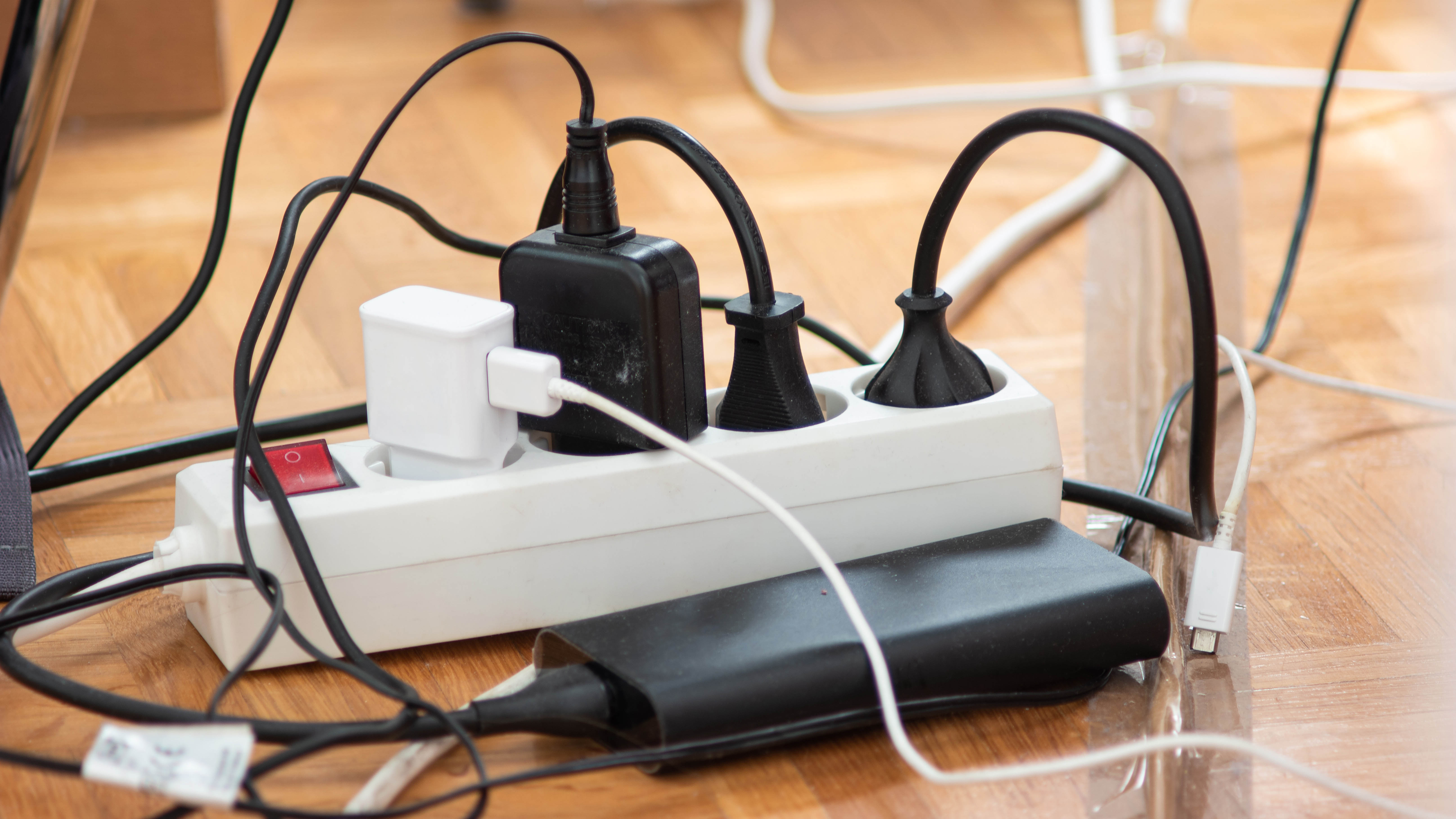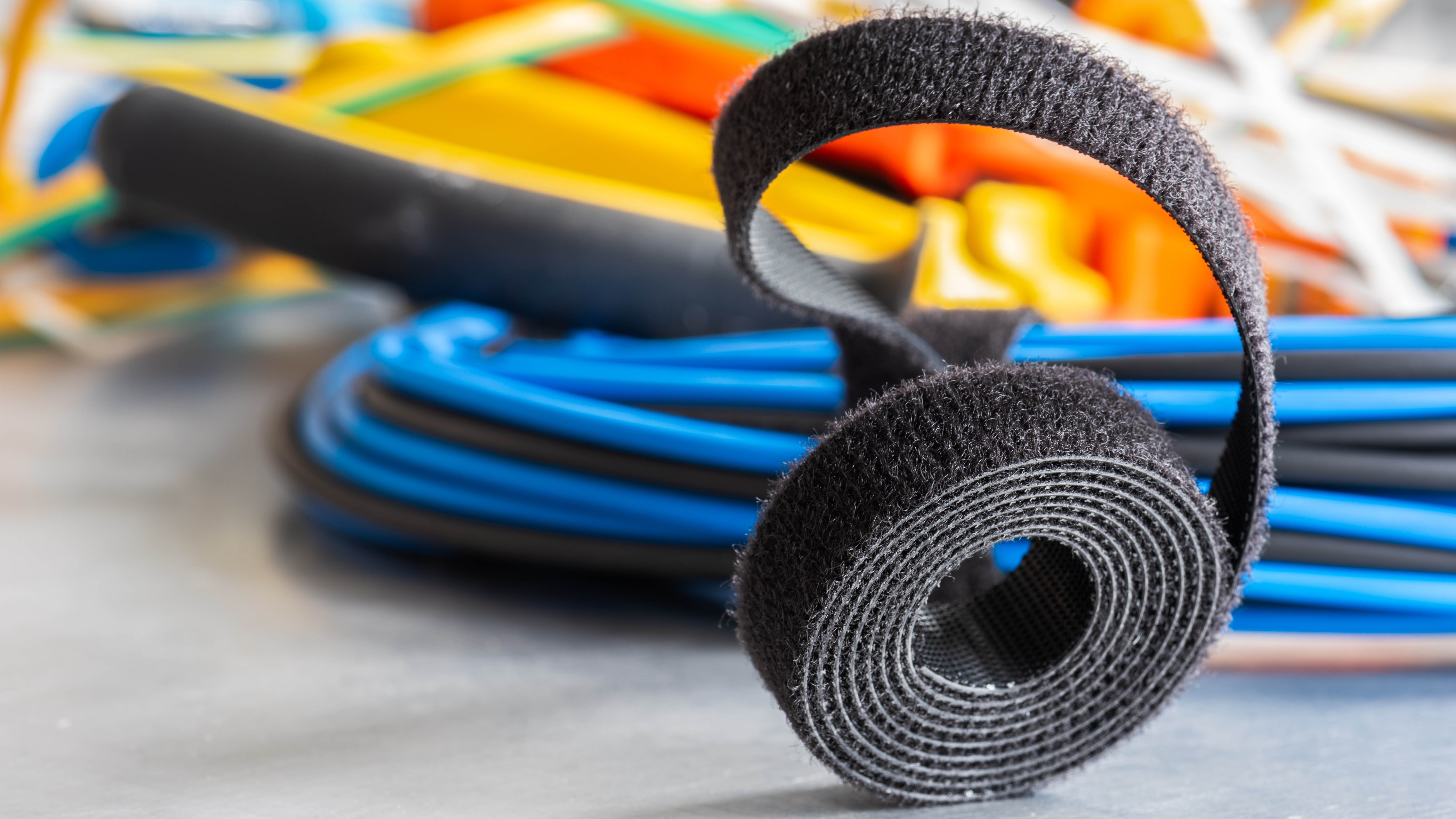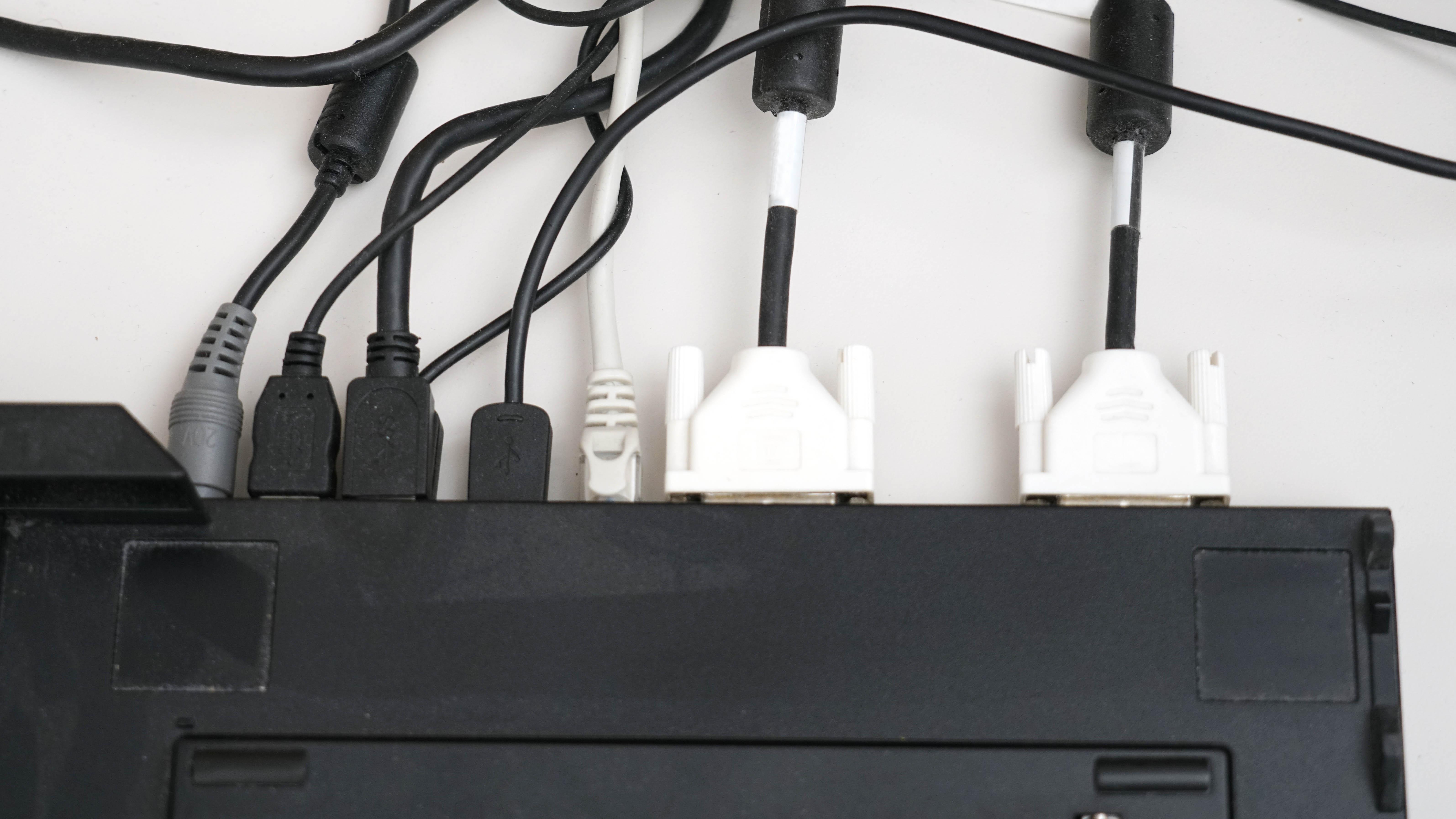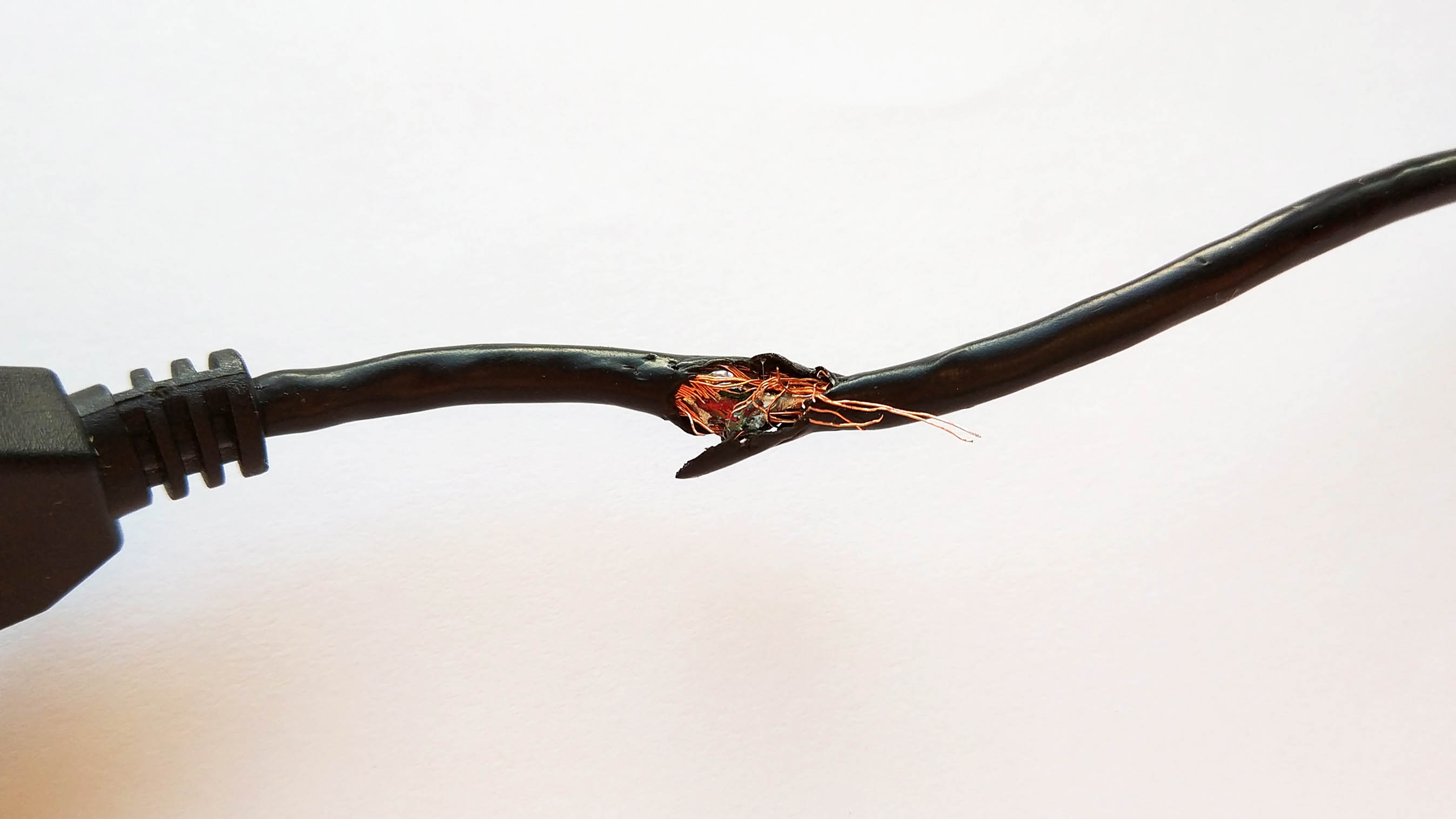10 ways to reduce cable clutter around your home
Is your home full of wires? Read this...

Between phones, laptops, tablets, TV and audio equipment, and the need to charge them all, it’s easy for your wire/cable situation to resemble a rat’s nest. In addition to looking unorganized, this mess can also make it hard to find the right cord when you need it.
However, there are several inexpensive ways to organize wires in your home to make these areas neat, tidy, and more presentable. Here's the best of them.
Plus, here are 7 creative ways to disguise ugly items in your home.
1. Hook-and-loop fastener or zip ties

Dan Mock, VP of operations at Mister Sparky – recommends using Hook and loop cable ties, such as VELCRO Brand ONE-WRAP Cable Ties ($11, Amazon) to corral cords and cables behind large stands and cabinets. “This can help you safely organize TV, internet and gaming cords that are otherwise in a jumbled mess,” he says. Mock recommends wrapping the ties around the wires that are close to each other. “Don’t tighten the wires too tight – just enough for the cords to stay together and not pull on the items they’re plugged into. “
Marla Mock, president at Molly Maid, also recommends using zip ties, such as these HMROPE 100pcs Cable Zip Ties ($3, Amazon) to bundle messy-looking wires and cords together to give them a neater look. Plastic zip ties are made of strong and flexible nylon. They have a self-locking design and 50 pound tensile strength handles.
And there are colorful options to match your décor. Amanda Wiss, founder of NYC-based home organizing company Urban Clarity, recommends reusable silicone zip ties, such as these Gelial Silicone Zip Ties ($10, Amazon), which are available in bright colors like red, blue, green, and yellow, as well as standard colors like black and white, and muted colors like lavender, light blue, and pale pink.
Wiss also recommends using regular household twist ties, (yes, the same type of ties you use to close bread bags), an example being Flixall. 5 inches Twist Ties ($4, Amazon). However, these are a premium quality PET plastic.
Get instant access to breaking news, the hottest reviews, great deals and helpful tips.
2. Pins and binder clips
For smaller cables, Mock recommends using something already in your home to organize wires: pins and binder clips, like these Mearun Solar Binder Clips ($9, Amazon). “Whether it’s in your office desk or kitchen drawer, most of us will have clips and pins laying around that can be put to good use,” he says. “Try clipping together phone chargers, lamp cords and any other thin cord - this can be useful around side tables or countertops.”
You can also attach the binder clips to the edge of your desk or table and then thread the cords through the clips.
3. Cable management channel cable raceway
You can completely hide your cords with a cable management channel cable raceway, such as this EVEO Cable Management 96'' J Channel-6 Pack Cord Cover- Cable Raceway ($18, Amazon). It can be placed under the table, above the table, or on the side of the table. The adhesive protector label keeps the open ended box in place, and some of the raceways can hold up to 10 cables and wires.
4. Cable clips

Multipurpose cable clips, like these OHill Cable Clips ($8, Amazon) can be used to hold cables in your home or in your car. And they come in a variety of small and large sizes, as well as triple and five slot cable holders. They have a peel and stick background.
5. Power strips/surge protector
A surge protector power strip with 18 outlets can allow you to neatly plug in numerous devices (and the surge protection protects your equipment from spikes and fluctuations). An example of this would be this POWSAV 18 Outlets Surge Protector Power Strip ($24, Amazon). In addition, this particular device also has 3 USB-A ports and a USB-C port. When mounted on the wall in an inconspicuous place, it can corral and hide a lot of wires.
6. Cable management kit
Another idea is a cable management system, such as this N NOROCME 192 PCS Cable Management Kit ($14, Amazon) Mock notes that it can be purchased online or from your local hardware store for a quick and simple organization solution.
Wiss recommends a cable management sleeve, like this Reliancer 10FT Cable Management Sleeve ($14, Amazon), if you prefer a more tube-like cable management system.
7. Zippered pouch

“Charging cords tend to move from room to room, so they need a different solution,” Wiss says. “Zippered pouches are a great way to keep them contained and easy to carry to wherever they’re needed.” And, she says that each family member can have their own pouch to hold all their chargers. A good example would be this Marie Kondo Kawaii Accessory Pouch Set ($12,The Container Store).
8. Charging station or organizer box
Mock also recommends taking a modern approach to organizing your cords by purchasing a charging station or organizer box on Amazon or a local home store. “Staying on trend with the home décor you already have at home, these organizers come in an array of colors and materials and will keep small cords like those for tablets and phones organized,” he says.
This charging station from Satechi ($59, Amazon) can charge up to five devices at a time, so you could charge 2 tablets, 2 phones, and a pair of earbuds at the same time.
On the other hand, a cable management box, like this model from Changsuo ($15, Amazon) can blend in with the décor, while hiding your power strip.
9. Docking station

If you have an extensive desktop setup, consider a docking station, like the UGreen Revodok ($199, Amazon), which is a 9-in-1 dual monitor that supports 4K@60hz. It has two HDMI ports and 2 DP ports for multiple extended modes with Windows or MacOS, and data transfer rates of 10 Gbps. Other ports include Ethernet, USBC 3.2 Gen, and USBA 3.2 Gen 2. All of the cords go neatly into the docking station, eliminating clutter.
Another option is the Anker 675 USB-C Docking Station ($249, Amazon), which is also a monitor stand — with space for a large monitor on top, and a keyboard and mouse underneath. The built-in cable management system includes 3 USB-A ports, 2 USB-C ports, SD/microSD card slots, a 4K HDMI port, a wireless charging pad, and an Ethernet port.
10. Over the door or closet shoe organizers
“If you have cords you're not currently using, don't leave them unplugged on the floor as those can become a trip hazard,” warns Mock. Instead, he recommends using over the door or closet shoe organizers with the pockets and inserting an unused cord in each of the pockets. “This is perfect for small to medium-sized cords and cables, such as ethernet cords, extension cords and more.” And they come in several color choices. An example would be this Amazon Basics 24 Medium Pocket Over-the-Door Hanging Shoe Organizer ($8, Amazon).
Other tips

After organizing your wires, Mock recommends taking an extra step and labeling them. “When it comes time to unplug a particular cord from the power strip or outlet, you’ll be glad you know which cord goes to which electronic device,” he says. “Labels also come in handy if you’re sharing space with other family members or roommates and want to be sure you’re using the cord that’s yours.”
In addition, he stresses prioritizing safety as you organize the wires in your home. “Be sure that wires are unplugged from outlets as you move them around - and if you see one that’s ripped or cracked, it’s a sign it needs to be replaced as soon as possible.” He warns that handling old or broken cords can be a safety hazard for everyone in the home, and can lead to house fires.
Wireless
Another option is to avoid wires – as much as you can. For example, with a desktop setup, you can have a wireless mouse and a wireless keyboard. Both have rechargeable batteries that can last for a long time, so you may only need to recharge these items once every few weeks.
Also, wireless phone chargers, which use magnetic induction instead of cables to transfer power can also help to keep your space tidy. However, always check to ensure that the wireless charger is compatible with your phone.
Bluetooth and wireless speakers not only eliminate wires, be can be taken anywhere. Smart TVs, media players and streamers also allow you to cut the cord.
In addition, Wi-Fi routers can be set up and monitored via app on your phone (as well as a local connected browser).
However, you’ll need a reliable Bluetooth or Wi-Fi connection (or you’ll be frustrated when the connection drops), and software security to keep hackers out.
More from Tom's Guide

Terri is a freelance writer living in Birmingham, AL. She is an experienced mattress and bedding product reviewer, and has tested hundreds of home and tech products, with bylines at Architectural Digest, Popular Science, CNN Underscored, NBC News, The Daily Beast, USA Today, Homes & Gardens, Bob Vila, and Tom's Guide.
